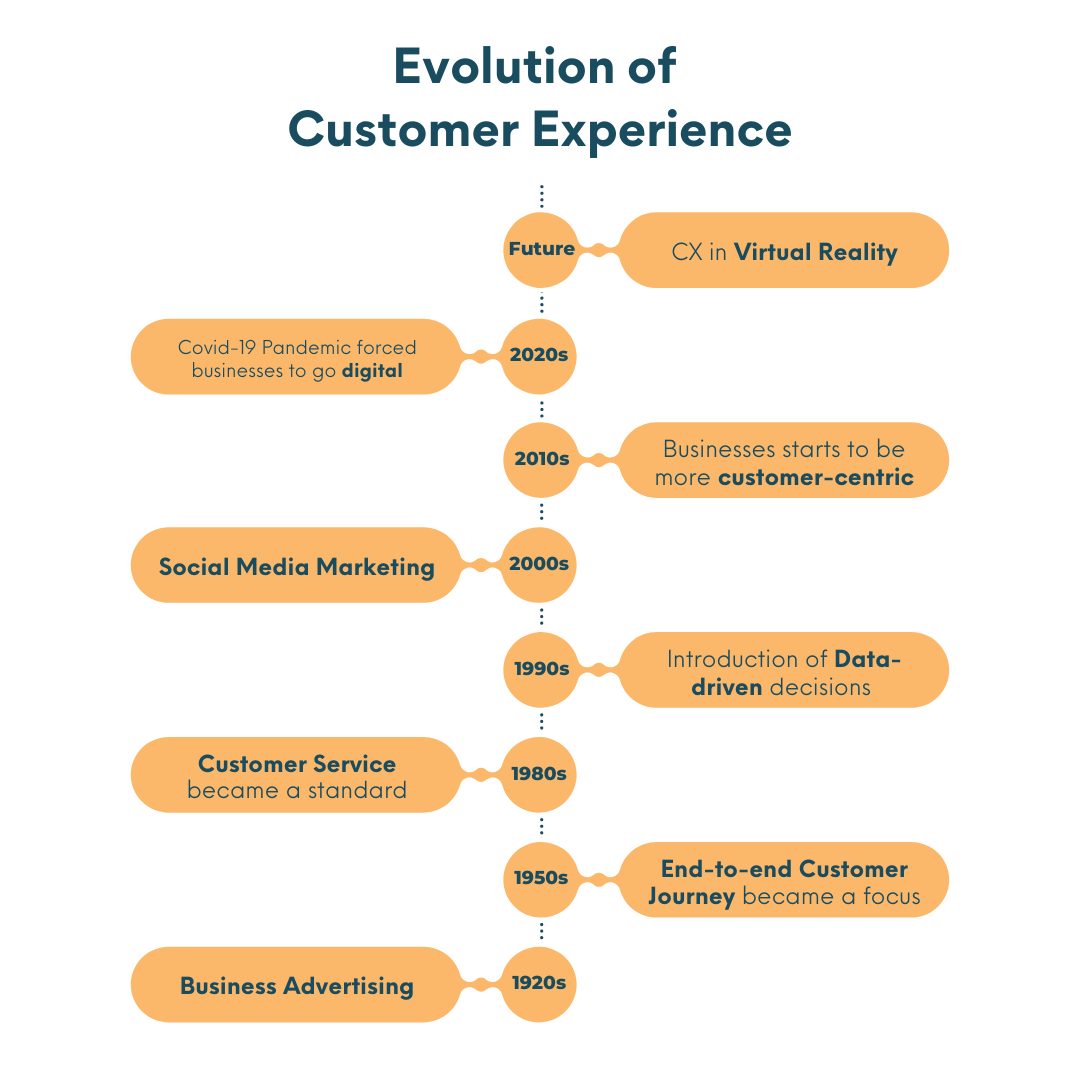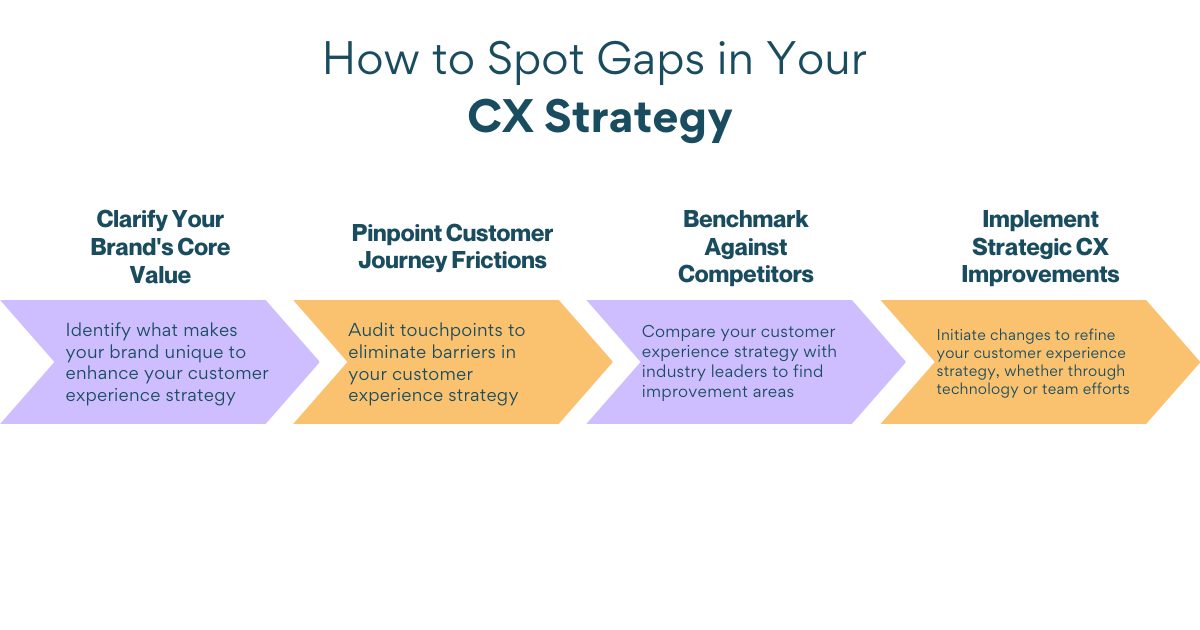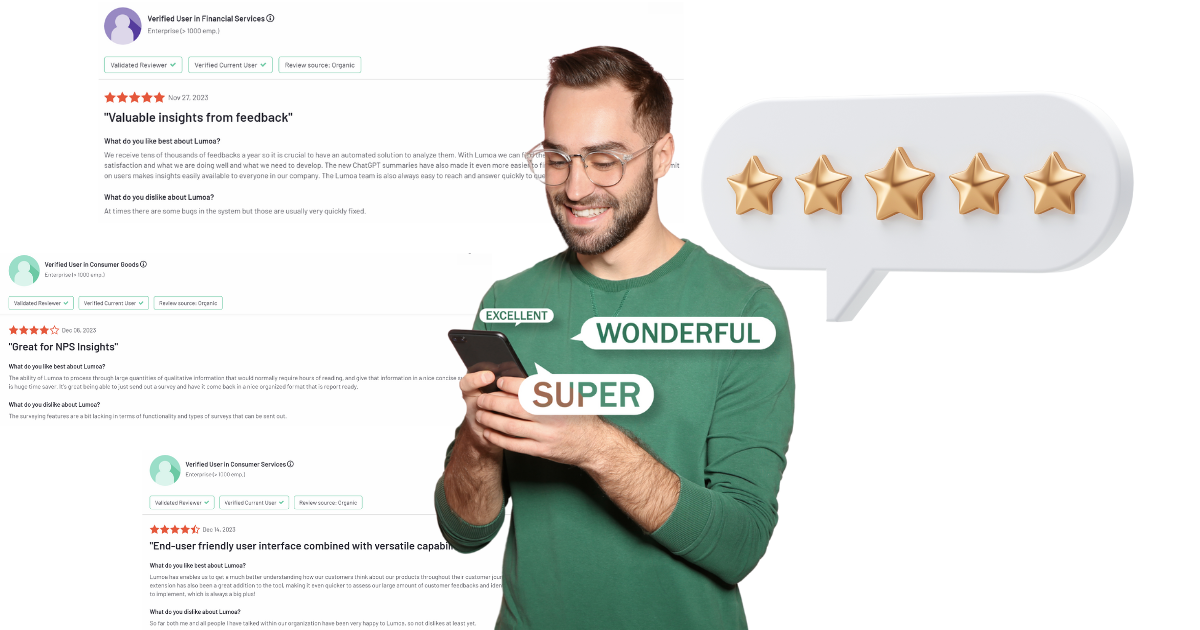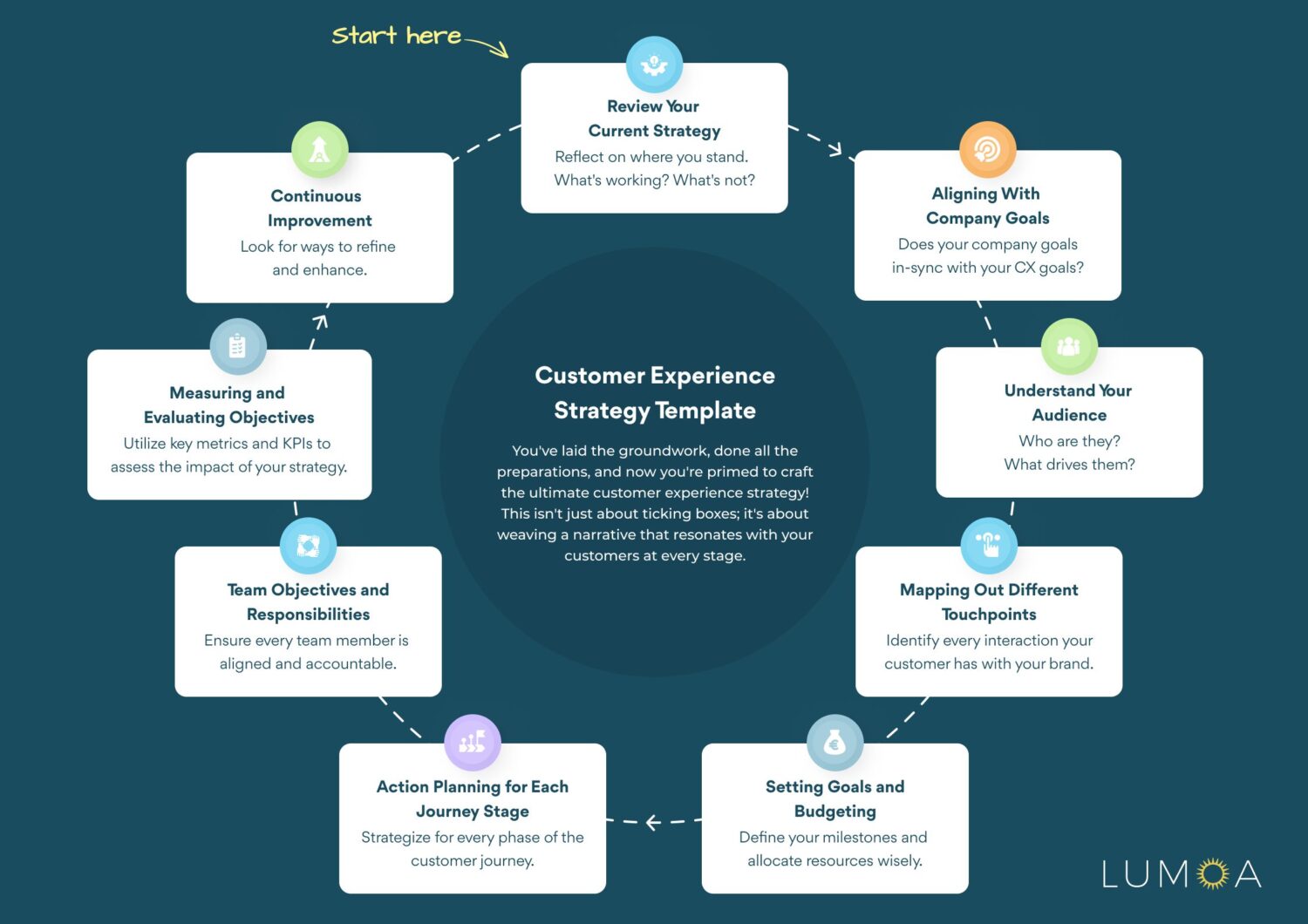How to Upgrade to an Advanced Customer Experience Strategy

Last updated on April 7, 2025
The internet has no shortage of platforms for consumers to share their unfiltered opinions about businesses. From social media posts to Google and Yelp reviews, every buyer can recount their customer experience with your company to a global audience. It is no wonder, then, that businesses have started paying much closer attention to their customer experience (CX) strategy.
A multi-dimensional CX strategy can be much more beneficial for your brand than one-dimensional customer service. But, developing a CX strategy that works is much more challenging than simply fine-tuning customer service processes. This is because CX involves many factors that are outside your direct control.
Even so, devoting time and resources to planning your CX strategy is worth the investment because giving your customers sub-par experiences is one of the most effective ways to drive them away. The Salesforce State of the Connected Customer Report found that 88% of buyers say their experience is as important to them as a company’s products or services.
So, how can your business win over this growing contingent of experience-focussed customers? Reviewing your existing CX strategy is a good place to start.
In This Article:
The Constant Evolution of CX
We already know that CX is an evolved form of customer service with a broader scope. It starts even before a consumer has their first interaction with your company and is an ongoing process that continues even after a sale has been made. Thanks to its expansive nature, CX strategies are constantly in flux. Watch the webinar replay of Redesigning CX programs: Enhancing the Way We Listen, Analyze, and Engage with Customers to learn more.
External factors like market demand, pricing trends, or competitors’ initiatives can arise at any time, setting off a chain reaction that affects your overall CX. Against this shifting backdrop, your business needs a clear and consistent CX strategy to hold on to.
Hubspot’s annual State of Service Report found that 90% of surveyed CX professionals felt that customer expectations have increased to an all-time high. Adapting your CX to meet these higher expectations can differentiate your brand and the competition.

One critical step in doing this is to identify key performance indicators (KPIs) that you can track while tweaking elements of your CX. From lead conversion rates (CVR), click-through rates (CTR), and Net Promoter Scores (NPS), companies use multiple metrics to analyze the effectiveness of their CX strategy.
How to Spot Gaps in Your CX Strategy
Tracking this data through CX management software gives companies the freedom to tinker with other aspects of CX, like the number of customer touchpoints or level of personalization, with measurable KPIs to judge the results.
Fine-tuning your CX elements is a constant exercise. While your customers should find familiarity in their interactions with your company, the relationship should never stagnate. That’s why it’s essential to continuously iterate new approaches to see what works best and integrate those into your CX strategy.
How customers experience your brand is more important than ever before. In Hubspot’s 2022 State of Service Report, 85% of the customer service agents agreed customers are more likely to share both positive and negative experiences. Your customer experience strategy can make the difference between having an advocate or a critic who can influence other buyers in their circle.
Is your CX strategy up to the task of meeting customers’ expectations going into 2024? Today, 73% of customers want companies to cater to their unique needs and expectations. Naturally, delivering this kind of personalized service at scale will require a well-crafted plan.
Since you’re already considering upgrading your CX strategy, it’s quite likely you’ve already covered the basics. That is, you’ve conducted diligent research on your customers to understand their motivations, created buyer personas for each demographic, and solicited inputs from all the CX stakeholders among your company colleagues and business partners (customer service reps, shipping partners, CX software providers, etc).
Now, it’s time to drill down into the details.

Define Your Brand’s Core Value
When auditing your CX strategy, the first step is to define your brand’s value asset. This is the quality that draws people to your brand. Your new CX strategy should emphasize your brand’s value to your target audience.
Once you’ve answered this all-important question, the answer will give you a better idea of what shape your overall CX should take.
Identify Customer Journey Pain Points
The goal of this CX audit is to identify and hopefully eliminate all of a buyer’s potential pain points in their customer journey. To do so, you need a detailed list of all the potential touch points in the customer journey. Then, use metrics like churn rate, CSAT, and CVR to gauge which touchpoints are negatively impacting CX.
Benchmark Against Competitors
Competitive analysis is also highly insightful during a CX audit. There’s always something to be learned from your industry peers, especially if they enjoy the support of a large customer base.
What value are they delivering to their customers that your company is not? Comparing your current CX strategy to brands that enjoy a reputation for great CX will highlight areas where you can improve.
Implement your Customer Experience Strategy
With your CX friction points now clearly visible, the time has come to start smoothing them out. A viable solution and new direction for your CX strategy will look different depending on your findings during the audit. Some companies might need to bring in an external CX agency to affect change, while others might realize that their in-house team is capable of leading the transformation.
In some scenarios, upgrading the CX means upgrading the company’s tech stack. Multiple CX software as a service (SaaS) solutions like Lumoa are available, which automate many CX tasks, offer a granular perspective for in-depth analysis, and streamline upgrading your CX strategy.
By the way, we also made a Definitive Guide to Creating a Standout Customer Experience Strategy Template with an editable template itself!
Five Ways to Improve Your Existing CX Strategy
Every company’s CX solutions will be unique. With that said, there are best practices in the CX industry that you should consider when developing a strategy for your own business. These include:
- Reduction Friction
Your CX vision should include making every interaction with the customer as smooth as it can be. When you require extra effort from your customers, you risk turning them off the experience. Try not to prolong interactions or resolution times by providing extra services.
In 2020, Zendesk’s Customer Experience Trends found that 69% of consumers attempt to solve issues on their own. Clearly, people prefer minimal interactions, even with brands they love. So, your CX strategy needs to ensure your customer journey is smooth, with as few touchpoints and channel switches as possible.
- Set Clear Expectations
Don’t make the mistake of trying to stand out from competitors by promising customers the world. When communicating with potential buyers or long-term clients, the golden rule is to under-commit and over-deliver. Nothing can harm your standing in a customer’s eyes than making a promise but failing to live up to it.
Also, your customers will feel more at ease on their buyer’s journey when they know what to expect. By clearly communicating the terms of your shipping policy, returns and exchange policy, and support coverage, you remove doubt from the customer’s mind. This makes them more confident about doing business with your company.
- Express Appreciation
When customers feel valued by your brand, they will want to keep coming back to relive that experience. They are the ones keeping you in business, and letting them know you are thankful for their support fosters loyalty toward the brand. A thank you note or a freebie sent along with a shipped order is a great way to show gratitude.
Another key way to let your customers know you appreciate them is to come right out and say it. Highlight your most valuable customers on your social media and website. Make their importance to your business clear by acknowledging their contributions to your success. When you share the love with your customers, they will love you right back!
- Personalize the Services
Nowadays, CX is all about personalization. Research from Deloitte found that companies that focused on personalization improved customer loyalty 1.5 times more effectively than brands that did not devote resources to it. A growing number of consumers now expect companies to be able to service their requests according to their preferences without having to specify them every time.
“Warm transfers” are a huge help in this area. This is where customers can switch to a new channel without needing to repeat themselves to a new agent. Don’t let your customers feel like just a number; add a human touch to your interactions.
AI and ML will be able to offer customers a degree of personalization they have not yet experienced because of their ability to:
- Deliver individualistic, personalized experiences by analyzing each customer’s purchasing history, browsing habits, and demographic information
- Offer 24/7 customer support through AI chatbots and interactive guides.
- Provide valuable insight into customer journeys by mapping each customer interaction
- Eliminate the possibility of human error impacting a customer’s interaction with the company.
- Embrace Technology
It might seem counterintuitive to champion technology as a game-changer for CX since having a human touch plays such a big part. But that doesn’t mean that automation has to feel cold or unwelcoming. If used correctly, CX SaaS can help make customers feel like they are receiving special treatment.
Automated services like chatbots allow customers to schedule their own self-service appointments. Your customers will appreciate having access to company resources at their convenience.
Automation can also be extremely useful for communication services. CX software can be used to conduct automated surveys that gather helpful information about your customers. Automated emails help find new customers, bring back lapsed ones, and build brand awareness among your target audience. To enhance the effectiveness and legal compliance of these efforts, incorporating email disclaimers in automated communications is a smart practice.
Future Trends to Incorporate into Your CX Strategy
The tips above are evergreen advice; they always have and will always positively affect customer experiences. But in CX, for every piece of timeless wisdom, there is a trend-based development that is very much a product of its time.
In the coming months, as 2024 brings new changes and trends, the CX industry is going to be shaped by the following movements. Being mindful of them can help you optimize several aspects of your CX strategy.
Increased Use of AI
As AI technology increases its capabilities, it will directly impact chatbot quality. Newer AI language models use Natural Linguistic Programming (NLP) to authentically replicate human speech patterns and have advanced sentiment analysis capabilities that let them register emotion. All these upgrades will lead to a new generation of chatbots that sound just as human as yours or I!
Also, data analysis in CX will become much more exhaustive as customer relationship management (CRM) software becomes adept at gathering data. This CRM software will need AI and machine learning (ML) features to present a meaningful analysis of all that data.
If you’re curious to know the role of AI in customer feedback analysis, we’ve got it covered with a practical guide and explain how you can be more successful using AI-powered tools.
More Data-Driven Analytics
Advanced analytics is enhancing the CX industry.. Gartner’s 2023 Top Priorities for Customer Service & Support Leaders Report identified customer data and analytics as integral for success.
Many customers are also willing to share controlled amounts of personal data if it can help personalize their experience. Finding the right CX solutions is going to need a lot of data crunching in the coming year.
Renewed Emphasis on Safety and Privacy
Today, more than half of all consumers (57%) prefer to engage with brands over digital channels. This puts the onus on brands to provide a secure online environment for their customers. Also, since customers voluntarily share personal data, brands need to handle it responsibly in order to respect their customers’ privacy.
Combining Online and Offline Channels
Shopping today has become a hybrid experience, unfolding in the virtual world and physical world simultaneously. Brands use virtual reality (VR) and augmented reality (AR) to let customers browse their products before buying them from a store or website.
Finding ways to let customers seamlessly switch between online and offline channels will be crucial for brands looking to up their CX game in 2024.
Investing in Customer Loyalty
Improved customer service and hyper-personalization are two tactics that are going to be used frequently in CX strategies across industries. The Deloitte report titled “Embrace Meaningful Personalization to Maximize Growth” has 71% of CX leaders saying that personalization plays a significant role in their CX strategy.
Your CX initiatives should be considered investments, with customer loyalty and repeat business being the outcome.
Use Customer Insights to Enhance Your Customer Experience Strategy
Most business owners see customer feedback in binary terms, as either negative or positive. But CX very rarely deals in absolutes.
In its original, unfiltered form, customer feedback might come across as merely negative or positive. But after meaningful analysis, you might have a nuanced enough perspective to see silver linings in the bad reviews and spot concerning warnings in the good ones.

When you promptly respond to customer feedback, it lets your audience know you take their needs seriously. Even critical reviews should receive a response, one where you announce the steps taken to correct the issue faced by the customer. A proactive approach to inviting customer feedback and then taking decisive action based on it can lead to a more free-flowing exchange of ideas between the company and its customers.
Benefits of Upgrading Your Customer Experience Strategy
An effective CX strategy is essential to your brand’s success. You can save costs by eliminating redundant touchpoints and under-utilized channels. Customer behavior patterns can be predicted, allowing you to plan your operations and identify growth opportunities. Better CX means happier customers, which in turn leads to positive word-of-mouth coverage as well as third-party coverage. If the triple blessing of customer satisfaction, increased sales, and lower costs haven’t yet convinced you to relook at your CX strategy, consider the following points:
- CX promotes cross-functional collaboration between departments
- CX gives all stakeholders a common goal and KPIs to achieve
- CX increases positive brand awareness among potential new customers in your target audience
- CX empowers employees to act independently in order to achieve the common goal
Choose the Right Tools for CX Management
Customer experience strategy today is highly data-driven and analytical. You need a dedicated team that works to ensure the quality of your customers’ experiences never slips, but they can’t do it without the right kind of assistance. Modern workplaces need modern CX solutions, which usually involve sales CRM software and AI- and ML-enhanced analytics.
To find the right CX software, you must first outline exactly what you need in terms of reporting capabilities and analytics features. Even if you think you’ve found the SaaS solution that matches your requirements, don’t jump on it right away. Stop to consider how the software will integrate with the rest of your tech stack.
One CX software that works well for most companies is Lumoa. It allows CX teams to see all the sensitive feedback and track every important metric on its clutter-free, easy-to-read dashboard.
With Lumoa collecting and collating a wealth of data, it’s possible to conduct deep analysis that leads to actionable insights. Lumoa is a new way to manage every aspect of CX, from customer surveys to social media monitoring.
Once you’ve found the right software, you will notice a difference in the quality of your data and the resulting insights. All the benefits of an effective CX strategy will be within your reach. Invest in your business’ growth by adding the CX solution you’ve been missing all this while.

